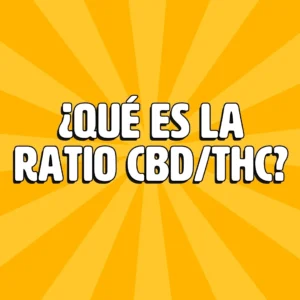Imagine feeling an incessant internal pressure, as if you were trapped in a pressure cooker that threatens to overflow. We are talking about an increase in pressure inside your muscles, capable of turning your day to day into a real ordeal. And the worst part is that traditional medical treatments often fall short. However, don’t give up: there are natural options that could be just the lifeline you need.
What is compartment syndrome?
Chronic exercise-induced compartment syndrome is a disorder that affects the muscles and nerves, triggering pain, swelling, and sometimes functional limitation in the muscles of the legs or arms. Although anyone can suffer from it, it is more common among young athletes and runners who undergo repetitive impact activities.
This syndrome can improve with nonsurgical treatments and adjustments in physical activity. If these do not work, surgery may be considered, which offers positive results to many patients, allowing them to resume their favorite sports.
What are its symptoms?
Your limbs house muscles grouped into specific compartments. For example, in the lower leg there are four of these compartments. Chronic compartment syndrome usually manifests itself in the same compartment of one limb and often in both legs.
Symptoms include:
- Pain, burning sensation, or cramping in the affected compartment.
- Stiffness in the area.
- Numbness or tingling sensation.
- Muscle weakness.
- In severe cases, difficulty lifting the foot.
- Occasional swelling or bulges from muscle hernias.
The typical pain of the syndrome follows a specific pattern: it begins after some time of starting exercise, worsens with activity and usually subsides 15 minutes after it has stopped. Over time, the recovery period can be prolonged. Stopping exercise or limiting yourself to low-impact activities may offer temporary relief, but when you resume intense activity, symptoms often return.
What causes compartment syndrome?
The exact etiology of chronic exertional compartment syndrome is complex and not fully understood. Exercise is known to increase muscle volume, but if you suffer from this syndrome, the fascia that surrounds the muscle does not expand properly, generating pressure and pain.
Factors such as the mechanics of movement during exercise, excessive muscle growth, particularly stiff fascia or high venous pressure could influence its development.
Risk factors
The risks of developing this syndrome are increased by:
- Age, being more common in athletes under 30 years of age.
- High-impact and repetitive exercises.
- Excessively intense or frequent workouts .
Complications
Although it is not fatal or usually causes permanent damage if treated properly, chronic compartment syndrome can significantly limit the ability to continue exercising or playing sports at the same level as before.
Complications
Chronic exertional compartment syndrome is not a life-threatening disease and usually doesn’t cause lasting damage if you get the right treatment. However, the pain, weakness and numbness associated with chronic exertional compartment syndrome may prevent you from continuing to exercise or play a sport at the same level of intensity.
Natural Ways to Combat Compartment Syndrome
- CBD: This compound, derived from cannabis, stands out for its soothing and anti-inflammatory effects, and can be applied topically or consumed sublingually to mitigate pain.
- Hot and cold therapy: Alternating ice and heat in the affected area can stimulate circulation and relieve inflammation.
- Rest and lifting: Resting the muscles and elevating the affected area can effectively reduce swelling.
- Stretching: Performed under professional supervision, they can improve flexibility and relax sore muscles.
- Relaxation: Techniques such as meditation or deep breathing can help manage the pain associated with the syndrome.
Conclusion
Compartment syndrome represents a complex and sometimes confusing challenge. Although conventional treatments are available, they are not always effective or suitable for everyone. The exploration of natural methods offers a valuable alternative or complement, which in cooperation with health professionals, can considerably improve the quality of life of those affected.
Bibliography and Digital Sources
-
Malekpour F, Modrall JG. Compartment syndrome and its management. In: Sidawy AN, Perler BA, eds. Rutherford’s Vascular Surgery and Endovascular Therapy. 10th ed. Philadelphia, PA: Elsevier; 2023:chap 105.
-
Stevanovic MV, Sharpe F. Compartment syndrome and Volkmann ischemic contracture. In: Wolfe SW, Pederson WC, Kozin SH, Cohen MS, eds. Green’s Operative Hand Surgery. 8h ed. Philadelphia, PA: Elsevier; 2022:chap 51.
-
Thompson NB. Compartment syndrome and Volkmann contracture In: Azar FM, Beaty JH, eds. Campbell’s Operative Orthopaedics. 14th ed. Philadelphia, PA: Elsevier; 2021:chap 74.
SOUTHERN PHARMA SPAIN S.L will not assume any liability arising from the use by third parties of the content of the website and may exercise all civil or criminal actions that correspond to it in the event of infringement of these rights by the user. It is absolutely forbidden to use the website or any of its elements for illicit purposes. The benefits and properties of cbd that could be read on the website www.gorillagrillz.com are in no way attributed to the products sold on the website. CBD products are not medicines and should not replace treatments with them. What you can read on our website are not official medical claims but references to preclinical studies. If you have any questions, you can consult with a professional health personnel. We remind you that in Spain CBD products are for topical use. All products have THC<0.2% analyses in accordance with Royal Decree 1729/1999.













